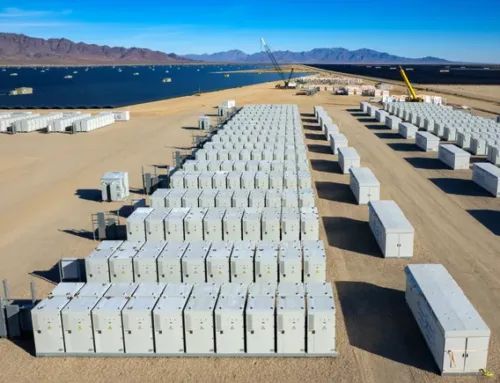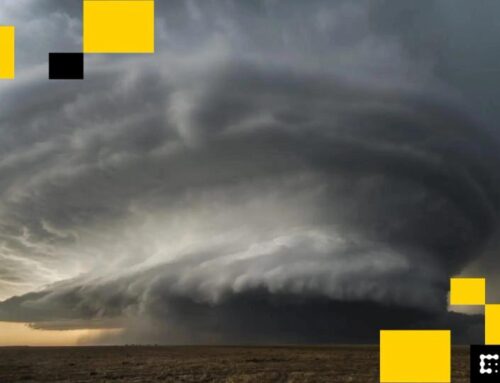Environmental Justice Ordinance Stalls In City Council
April 17, 2025
CITY HALL – An ordinance aimed at protecting neighbors from disproportionate effects of pollution in their neighborhoods and changing how the city decides where heavy and intensive industries can operate stalled in City Council Wednesday.
Mayor Brandon Johnson introduced the awaited ordinance at a City Council meeting where Ald. Raymond Lopez (15th) referred it to the Rules Committee, where legislation is often sent to die. But the proposal’s introduction Wednesday sparked an impassioned rally earlier in the day, where supporters pressed its urgency.
Named after a Southeast Side environmentalist who’s been called Chicago’s “mother of environmental justice,” the ordinance aims to strengthen protections for environmental justice communities through a more thorough zoning process for some industries. It calls for the city to complete a cumulative impacts assessment every five years that would be considered in zoning, land use, permitting and other city decisions.
“We can no longer just narrowly think about air quality or traffic impacts, but we need to think more comprehensively, about the combined health, environmental and social stressors,” said Angela Tovar, commissioner of the city’s Department of Environment.
The ordinance was required by a 2023 settlement agreement between the city and federal housing officials after the U.S. Department of Housing and Urban Development concluded that city officials “discriminated on the basis of race and national origin” by clustering polluting industry in nonwhite communities.
When the city settled, it committed to creating an environmental justice plan and completing a cumulative impacts assessment that would be used to create a cumulative impact ordinance.
If approved, it would change the city’s zoning and permitting processes for newly-established intensive industries, waste-handling and recycling facilities, freight facilities, and other heavy industries, according to the measure.
For the ordinance to be considered by City Council, it will have to be voted out of the Rules Committee at the next Rules Committee hearing. Then, it must be reintroduced to City Council to be reassigned to a city committee in the next City Council meeting, said Iyana Simba, city government affairs director for the Illinois Environmental Council.
Environmental advocates say they will continue calling on neighbors to take action and urge their elected officials to support the ordinance.
The measure aims to prevent exposing neighbors in overburdened communities to more pollution by strengthening the zoning review for “heavy and intensive land uses,” Johnson said in a release.
“This is an opportunity to encourage businesses to make sure that their drive to build our economy cannot come at the expense of the health of people,” Johnson said at a press conference Wednesday.
Earlier that morning, environmental advocates from several groups called the ordinance a milestone that recognizes and aims to reverse decades of environmental racism.
“This is a historic day,” said Cheryl Johnson, Hazel Johnson’s daughter and executive director for nonprofit People for Community Recovery, at a press conference calling on City Council to support the measure.
“My mother fought diligently to get the city of Chicago to recognize that air pollution is a problem in the city of Chicago and the industry located in Black and Brown communities has always been the burden of most pollution,” Cheryl Johnson said.
Under the proposed ordinance, intensive industries and other polluting companies that want to open a new site or expand an existing site must complete a cumulative impact study, host a public meeting and have their plans and cumulative impact study reviewed by an environmental justice advisory board, Simba said.
The ordinance builds on years of efforts by environmental advocates who have fought for the city to recognize decades of environmental racism, which disproportionately affects neighbors in the city’s South and West Sides.
“The Hazel Johnson cumulative impact ordinance recognizes that pollution doesn’t exist in a vacuum. It compounds over time. It stacks up in the same neighborhoods, in the same homes, in the same families,” Tovar said at a press conference Wednesday morning.

It also recognizes the city’s policies have contributed to disproportionate pollution in Black, Latino and low-income neighborhoods, which have led to health disparities and life expectancy gaps among Chicagoans, environmental advocates said.
If approved, intensive industrial facilities, warehouses, wholesalers, freight sites, and some recycling facilities would need the city to approve a special use permit if they apply to open in areas zoned for commercial and manufacturing uses, according to the ordinance text.
A special use permit would also be needed for companies producing components such as cement, fertilizers and paint, class III recycling companies and warehouses and freight terminals in manufacturing districts – a change of the currently permitted uses in the city’s industrial corridors.
“For decades, the pursuit of development and economic growth has disregarded the detrimental effects on people’s health. This ordinance will be a crucial step in rectifying this oversight,” said Alfredo Romo, director of Neighbors for Environmental Justice and McKinley Park neighbor, at a press conference Wednesday morning.
The ordinance calls for creating a mayor-appointed environmental justice advisory board, composed of 21 members from environmental justice priority areas, environmental organizations, business and public health and climate experts.
“For the first time in the history of the city of Chicago, we’re all sitting at the table to evaluate the quality of life, the quality of air for all communities,” Cheryl Johnson said.

Some Southwest Side neighbors, however, said they are skeptical the ordinance will lead to effective changes if the city fails to enforce it.
The environmental justice advisory board “is solely advisory” and does not have the authority to make binding decisions, according to the ordinance text.
Recent experience has shown the city and the Chicago Department of Health’s “unwillingness to follow and adhere to the current city ordinances and CDPH rules and very little appetite to use the current enforcement powers,” said Brian McKeon, a member of Lucha por La Villita and a critic of the city’s controversial decision to renew a permit for Pilsen metal shredder Sims Metal Management.
“It will do nothing if the city doesn’t have a willingness to hold polluters accountable,” McKeon told Block Club.
The ordinance also does little to regulate existing serial polluters, known for their history of environmental violations, unless they seek an expansion, such as MAT Asphalt and Sims Metal Management, some environmental advocates said.
“Even if this ordinance operates the way the city has said it will, it will do nothing to rein in existing polluters,” McKeon said.
Proponents of the ordinance said it is a crucial step to include “key terms” such as environmental justice and cumulative impacts assessment in local laws amid President Donald Trump’s administration rollback of air pollution regulations and other environmental protections.
“These are very important to have codified in municipal code,” Simba said.
Ald. Daniel La Spata (1st), Julia Ramirez (12th), and Maria E. Hadden (49th) said they support the ordinance, which will promote economic growth while protecting neighbors’ health, ending “sacrifice zones, while rallying with environmental advocates Wednesday morning.
“We don’t need to poison our city in order to thrive ,” Hadden said at a press conference Wednesday morning.
Listen to the Block Club Chicago podcast:
Search
RECENT PRESS RELEASES
Related Post




